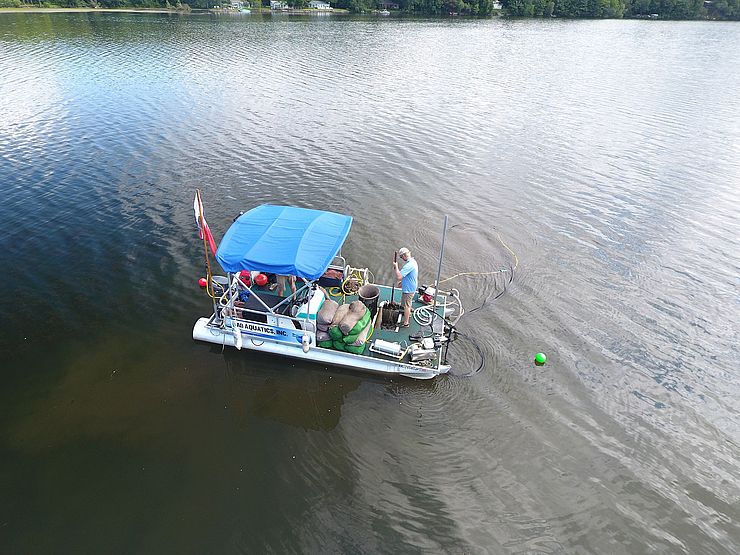
What are aquatic invasive species?
Aquatic invasive species (AIS) are aquatic organisms that invade ecosystems beyond their natural, historic range. Their presence may harm native ecosystems or commercial, agricultural, or recreational activities dependent on these ecosystems.
People have helped spread species around the globe for centuries either intentionally or unintentionally:
- Intentional introductions involve the deliberate transfer of nuisance species into a new environment. An example of this would be someone who dumps the contents of their home aquarium into a lake.
- Unintentional introductions occur when invasives are transferred accidentally. For instance, zebra mussels can be spread in the ballast tanks of wakeboard boats. They can also be spread on fishing or diving gear, and on any other boat or even boat trailers that come in contact with the water. For this reason it is vitally important that all boats, ballast tanks, and so forth are carefully cleaned, preferably with a hot water wash, and dried before moving from one waterbody to another (US Fish & Wildlife Service).
Lake Champlain is now home to some 50 aquatic invasive species, both plant and animal, including major infestations of Rusty Crayfish, Spiny Water Flea, Zebra Mussels, Knotweed, Water Chestnut, and Variable-leafed Watermilfoil. A major concern for inland lakes, such as Lake Iroquois, is that these invasives could be spread by boats moving between Lake Champlain and other lakes. There are always new potential threats to our local waterways, so we need constant vigilance and strong stewardship programs such as the LIA Greeter and Boat Wsh Program and educational outreach to keep them out of our lake for as long as possible (ideally, forever).
Here at Lake Iroquois, the only invasives we have found are Eurasian Watermilfoil (EWM) and curly pondweed. By far, our most serioius problem is with the severe infestation of Eurasian Watermilfoil. The LIA has been working to reduce the nutrients that feed this infestation and to reduce and control the infestation itself. This effort includes ongoing educational outreach to lake users and property owners to inform them of the situation and to help them to be more aware of using best lake practices, as well as developing an integrated lake management plan to reduce and control the milfoil.
For information on invasives, the threat to the Lake Iroquois ecocsystem, and what the LIA is doing about it:
